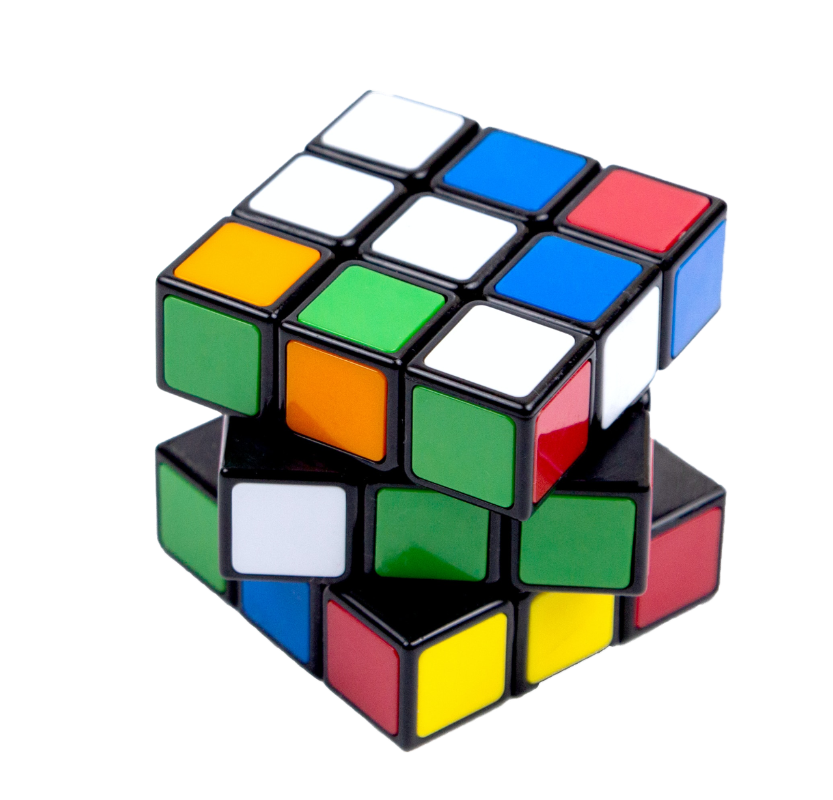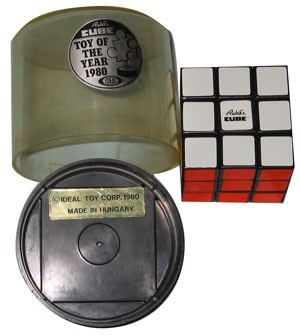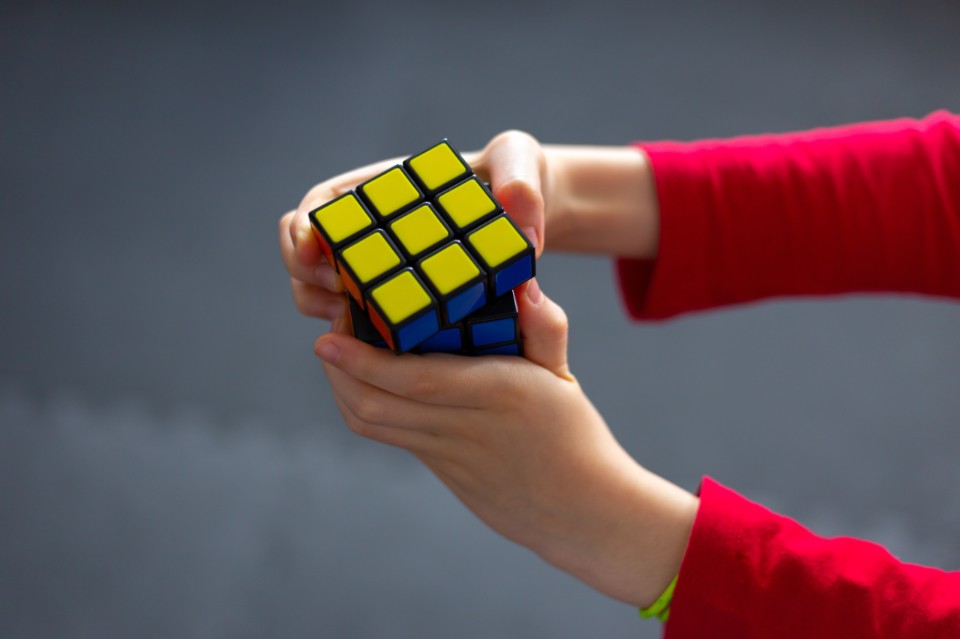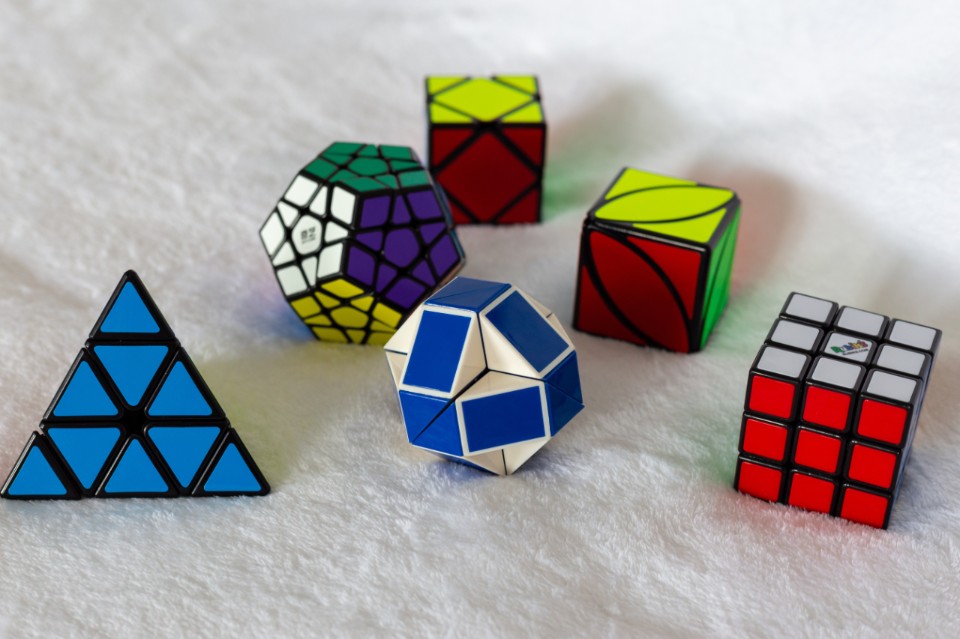When we define something as a “classic” we have the impression that it’s an integral part of our existence. It’s so obviously ingrained in our collective consciousness that picturing a world without it feels implausible.
In the realm of games and pastimes, the Rubik’s Cube is a prime example – a puzzle/magic polyhedron so ingrained in our lives that it feels like it’s been around forever. Surprisingly, it’s only about to hit the half-century mark. At a time when nostalgia is constantly reviving the trends of the ’80s and ’90s, making consumers live an eternal present, the Rubik’s Cube stands out as a timeless passion. Except for a brief lull, it’s been captivating audiences of all ages around the world for decades.
But what made designer/architect Ernő Rubik and his creation so immortal?
Puzzles and magical polyhedra
Defining a “puzzle” is a pure logical exercise, where wit takes center stage. Throughout human history, people around the world have embraced the playful space of puzzles, turning them into a personal showdown between creator and solver. Notable examples include anagrams, crosswords, the 15 Puzzle, mazes, mahjong, rebuses, and Sudoku.

For those less familiar with geometric jargon – which, truth to be told, doesn’t impact gameplay as much as pure mathematics – the question arises: What’s a “magical polyhedron”? A polyhedron, a three-dimensional solid, earns its “poly” tag due to its myriad faces, spanning the spectrum from regular to irregular forms with unique quirks, which we won’t delve into today. Consider the cube, a polyhedron doubling as a Platonic solid.
So, what is it that makes the Rubik’s Cube more magical than, say, a dice? It’s the possibility to variably combine its components – individual faces, fragments, or even minutiae – generating an astronomical array of combinations (and solutions). While the go-to contenders in this game genre predominantly riff on cube variations, pyramids, and other Platonic solids are not uncommon, venturing into intricate, challenging forms that defy simple geometric descriptions.
The cube
In the world of modern history, the Rubik’s Cube has swiftly risen to the top of its class as one of the most renowned pastimes. Conceived in Hungary by Ernő Rubik in 1974, it initially hit the market exclusively in Budapest through Politechnika in 1977. Later, in 1979, Tibor Laczi and Tom Kremer of Seven Towns, an idea factory, took over, sealing a deal with Ideal Toy.
The Cube’s original form was quite different from today’s. Born as a mechanism that would allow part movement without structural collapse, it was a one-colored wooden object. Popular especially among Hungarian mathematicians, it fascinated with its ability to generate statistical problems. Even its name was different – Magic Cube, under which it was patented in 1975.

The Cube’s breakthrough came at the 1979 Nuremberg toy fair, propelling it into the limelight. By 1980, it had taken its iconic shape and name, and won the Game of the Year (Spiel des Jahres) award in Germany, followed by similar awards in England, France, and the United States. Its lighter, plastic avatar captured the hearts of children (and others) worldwide in the 1980s, becoming an unstoppable craze. Over the decades, its creator sold hundreds of millions of units, with a staggering 200 million between 1980 and 1983 alone. Thus, the Rubik’s Cube solidified its status as the world’s best-selling puzzle game.
The cube in mass culture
Today, perhaps more than ever, the Rubik’s Cube is a worldwide phenomenon. Beyond its Guinness World Records for speed-solving feats – whether blindfolded, one-handed, or other mind-boggling variations – what truly astounds after five decades is its profound impact on mass culture. With countless variations featuring different modules, shapes, and complicating mechanisms, the cube’s fundamental structure boasting 519 trillion possible combinations has shaped paradigms in the realms of puzzles and visual icons. This influence has spilled over into various media, as seen in the Cube film franchise, where the Rubik’s Cube-inspired enigma forms the core of the narrative across films like Cube, Hypercube, and Cube Zero.

Unsurprisingly, the cube’s unmistakable visual language has significantly influenced architecture over the years. From the planned cube museum in Budapest, with its perhaps overly didactic evocation of facial movements and architectural compositions, to diverse tributes like the colorful cube in Scheveningen’s port, the Disney’s Pop Century Resort staircases, Melbourne’s Children’s Gallery, Toronto’s Scotiabank Theatre, and other noteworthy works, the Rubik’s Cube has left an indelible mark. Its influence even extends into the digital realm with the creation of “cube houses” in Minecraft.

The numbers of the cube
While the mind-boggling number of Rubik’s Cube combinations is impressive, it’s not the only noteworthy stat. Back in 1981, James G. Nourse’s book, “The Simple Solution to Rubik’s Cube”, flew off shelves, selling 6 million copies – likely because most players cannot get past the second face. In 1982, a whopping two-meter edge cube, apparently fully functional, was exhibited at the World’s Fair in Knoxville, Tennessee.
After a 20-year break, the World Rubik’s Games Championship breathed new life into the scene in 2003, giving the franchise’s sales a boost. YouTube played a pivotal role in the late ’90s surge, as users flooded the platform with solving videos. The year 2000 marked the bloom of various cube producers, thanks to Rubik’s patent expiration, repeatedly registered for resembling Larry D. Nichols’ 1970 puzzle with rotating 2x2x2 elements.

Fast-forward to June 11, 2023, when Max Park dominated the scene, setting a jaw-dropping 3.13-second speed record for the classic 3x3x3 cube. Yiheng Wang wasn’t far behind, averaging 4.48 seconds in three out of five attempts, excluding the fastest and slowest. Park also holds the one-handed solution crown at 6.2 seconds, set in August 2022, and a three-out-of-five attempt record of 8.62 seconds, achieved on December 3, 2023.
The art of the cube
Google and Rubik himself have curated a collection of interactive works in the Chrome Cube Lab. Here, anyone can showcase their unique creations using the iconic cube, from simple customizations to more intricate designs. In 2014, Jersey City hosted an exhibition celebrating the 40th anniversary of the Rubik’s Cube. The exhibition featured extraordinary cubes, including a dazzling 100-meter light structure that viewers could control with their smartphones. The event also comprised a $2.5 million diamond cube and puzzle-solving robots.
On a more creative note, the “Rubik’s Cubism” movement takes center stage. This unique form of pixel art uses ordinary cubes to create geometric patterns and color schemes. One of the movement’s early pioneers is perhaps the nearly blind Fred Holly, who created intricate compositions from these cubes. Today, renowned artist Pete Fecteau is celebrated for his 2010 masterpiece “Dream Big”, three portraits of Martin Luther King Jr. created from 4242 “official” cubes.
Opening image: Rubik’s Cube. Photo by Sigmund


